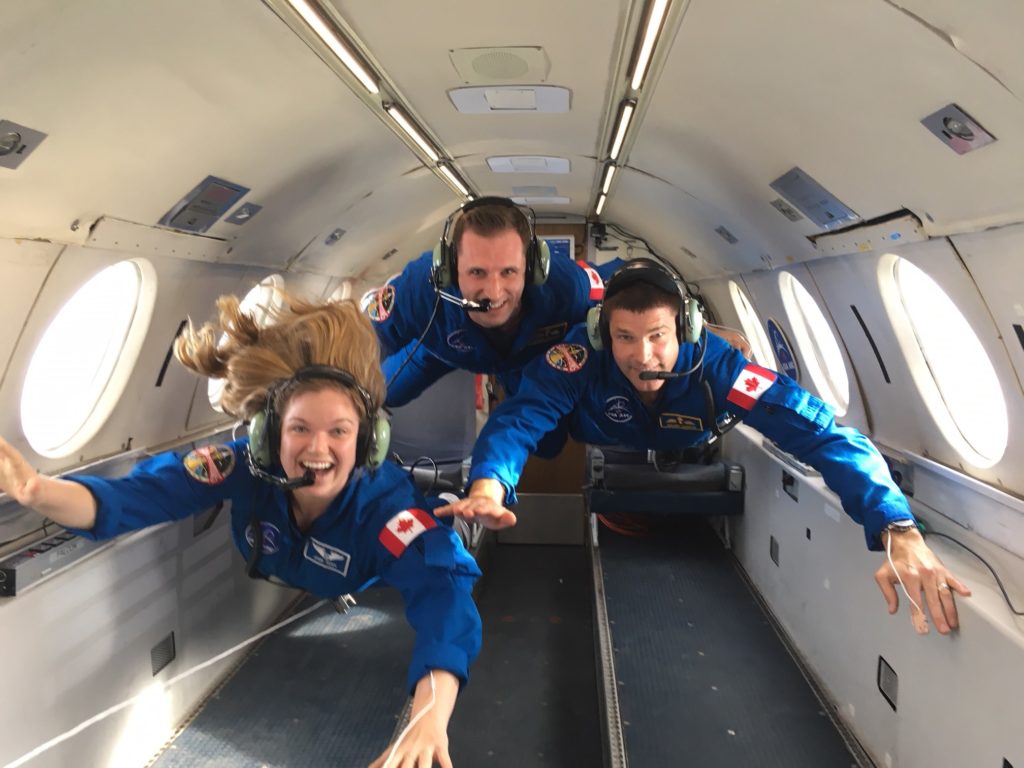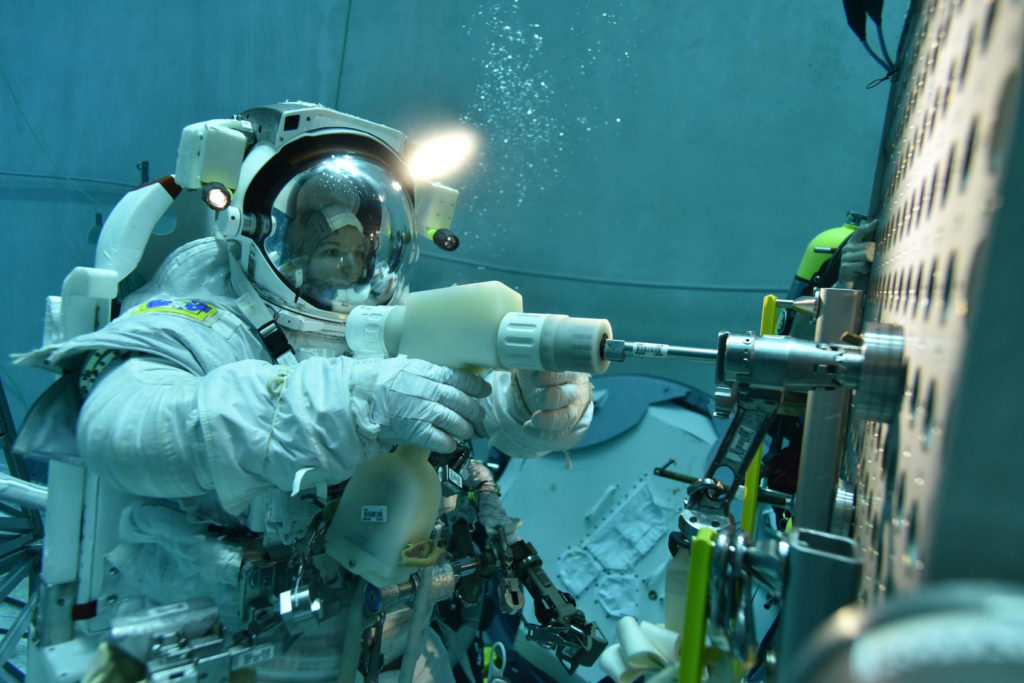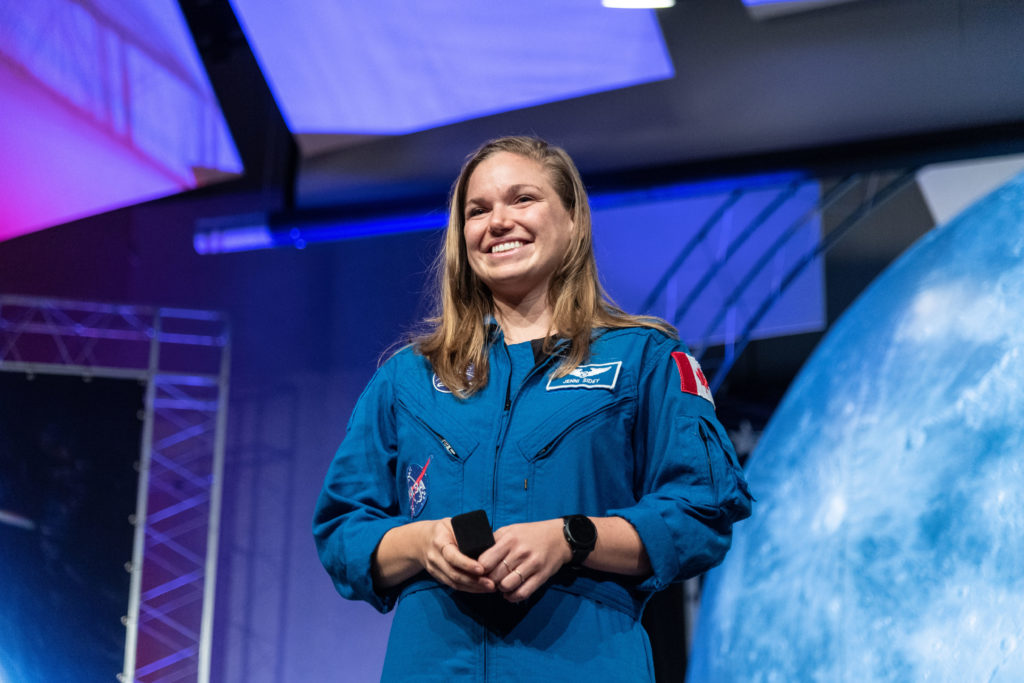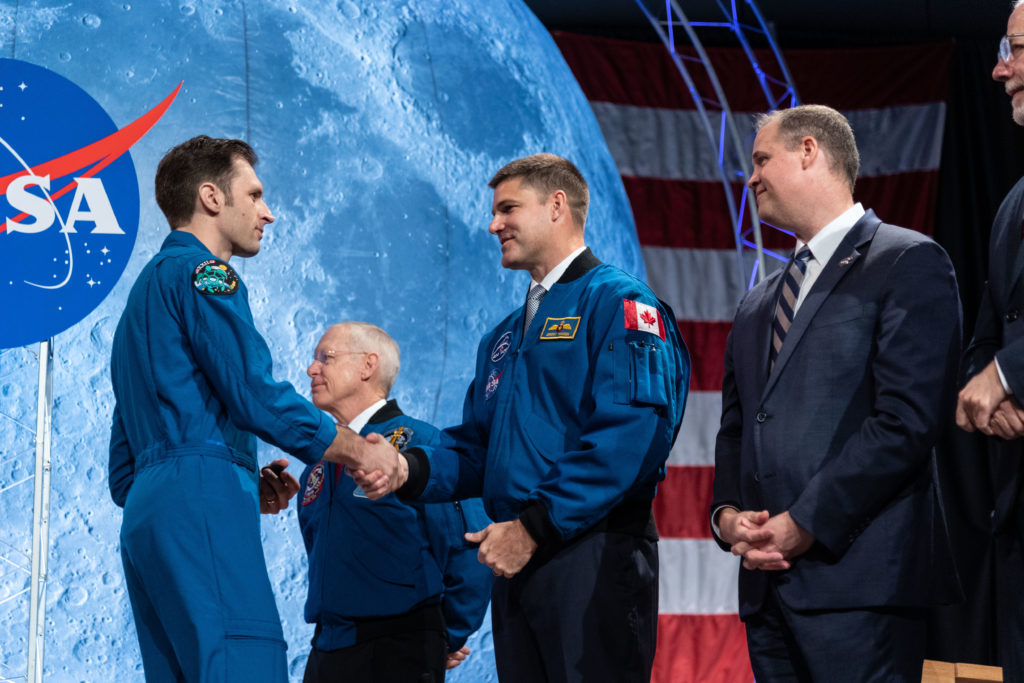Estimated reading time 9 minutes, 30 seconds.
On Jan. 10, 2020, Canada’s cadre of mission-assignable astronauts was expanded, with Dr. Jenni Sidey-Gibbons and RCAF LCol Joshua Kutryk graduating from their two-year Astronaut Candidate Training Program.

The two were selected by the Canadian Space Agency (CSA) from a pool of more than 3,700 applicants during a 2016 selection campaign, becoming Canada’s 13th and 14th astronauts. They graduated as members of NASA’s 22nd astronaut class, which began in August 2017 as a combined group of 14. In August 2018, Alaska native Robb Kulin became the first astronaut candidate in 50 years to step away prior to course completion, citing personal reasons; this reduced the graduating class to 13.
Shared Albertan roots
Sidey-Gibbons, 31, is a native of Calgary, Alta. She holds an honours bachelor’s degree in mechanical engineering from McGill University and a Ph.D. in engineering (combustion) from the University of Cambridge. During astronaut training, she earned her private pilot’s license, flying in general aviation planes, as well as in T-6 Texan IIs (the U.S. variant of the Canadian Harvard II) and the T-38 Talon, both dual-seat trainers.
Kutryk, 37, also an Albertan, hails from Fort Saskatchewan. Followers of the RCAF CF-18 Demonstration Team may recognize the last name, as it was Kutryk’s younger brother Matthew, also an officer and pilot in the RCAF, who flew the famed Canada150 demonstration jet in 2017. Joshua holds a bachelor’s degree in mechanical engineering (1st Class Distinction) from the Royal Military College of Canada, a master’s degree in space studies from Embry-Riddle Aeronautical University, a master’s degree in flight test engineering from the United States Air Force’s Air University, and a master’s degree in defence studies from the Royal Military College of Canada. His CSA biography indicates 3,500+ hours of flying time on more than 25 aircraft types.

Training for success
The Astronaut Candidate Training Program curriculum includes scientific and technical briefings, intensive instruction in International Space Station (ISS) systems, simulated extravehicular activities (EVAs, or spacewalks), robotics, physiological training, flight training, Russian language courses, and sea and wilderness survival training.
Speaking with Skies on graduation day, Sidey-Gibbons noted that while she had very little aviation experience prior to joining the CSA, she enjoyed working hard through the steep learning curve to succeed in her pilot training. It helped reinforce “how to think on my feet and make decisions quickly, with pretty severe consequences,” she said, stressing that it was not only “the ability to make those decisions quickly, but to do them in the context of a crew. I mean, that is directly applicable to spaceflight. You have to aviate, navigate and communicate, and you have to do it together.”
When asked about his most memorable or exciting training experiences, Kutryk immediately grinned and referred to two of the exercises which simulate weightlessness: the parabolic microgravity flights, and his underwater spacewalk training in NASA’s Neutral Buoyancy Laboratory.
“To the credit of the simulations that they run, you really quickly lose track of thinking that you’re on Earth, in a simulation,” he mused. “You really do feel like you’re in space, working on the International Space Station.”
Speaking about resources which are available to help young Canadians connect with dreams and goals involving space and science, he pointed out that the CSA has launched a new program for grade 6-9 students, called Junior Astronauts. “We didn’t have it when I was a child, dreaming about spaceflight, but we have it now – and it has a lot of opportunities for them.”

A Canadian first
Making history as the first Canadian to be assigned as a NASA Class Supervisor, Col Jeremy Hansen was entrusted to guide and mentor the candidates to grow in ways beyond just the classical knowledge and skills-based learning – a challenge he very much enjoyed, “It’s been a really rich experience for me, professionally and personally.”
During the graduation ceremony, Pat Forrester, chief of the NASA Astronaut Office, expanded on the importance of Hansen’s appointment, stating “We are very good at teaching people how to fly in space, but there is one other important component that is very important to me, and that’s character. The person that gets to lead a brand-new astronaut class is somebody that we trust to instill character in those individuals. I can’t think of anyone that could have done that better.”

Beyond 2020 – what lies ahead
In speaking with Skies about his expectations for 2020 and beyond, Kutryk was emphatic that “the future of space in Canada is very bright”. In addition to a slot existing for a Canadian to fly as part of a future ISS expedition, there are also many engineering, program and mission support duties to be carried out.
“I’ve always been driven by a very strong desire to explore the world around me, and I’ve always been extremely curious,” he shared, feeling confident that he will quite enjoy any projects or responsibilities which the Agency assigns to him.
Sidey-Gibbons, when asked ‘what’s next’, expressed a great sense of pride and eagerness that she is available to support the International Space Station (ISS) operations, continue with her expeditionary training, or even work with others to deliver on the commitment made by Canada in February 2019, becoming the first international partner to align with NASA on the Lunar Gateway project, part of their Artemis program.
Artemis, announced 50 years after Apollo 11 carried Neil Armstrong and Buzz Aldrin to the surface of the moon, features a plan to see humans return to the moon, first through the establishment of a cis-lunar orbiting outpost and ultimately by landing the first woman and next man on the lunar surface, all by 2024.

According to the CSA, Canada’s contribution to the Lunar Gateway will be Canadarm3, a smart robotic system which includes a next-generation robotic arm as well as equipment and specialized tools. Using cutting-edge software and advances in artificial intelligence, this highly-autonomous system will be able to maintain, repair and inspect the Gateway, capture visiting vehicles, relocate Gateway modules, help astronauts during spacewalks and enable science both in lunar orbit and on the surface of the Moon.
The ability to perform these tasks without human intervention will be vital as the Gateway will not be crewed continuously, and communications delays caused by its lunar orbit will prevent direct real-time control of the robotic system from Earth.
Which brings Kutryk’s observations back into the spotlight, front and center: “The opportunity right now for Canada in space, as I glance towards the next five or 10 years, has never been bigger – it’s a very exciting time.”








